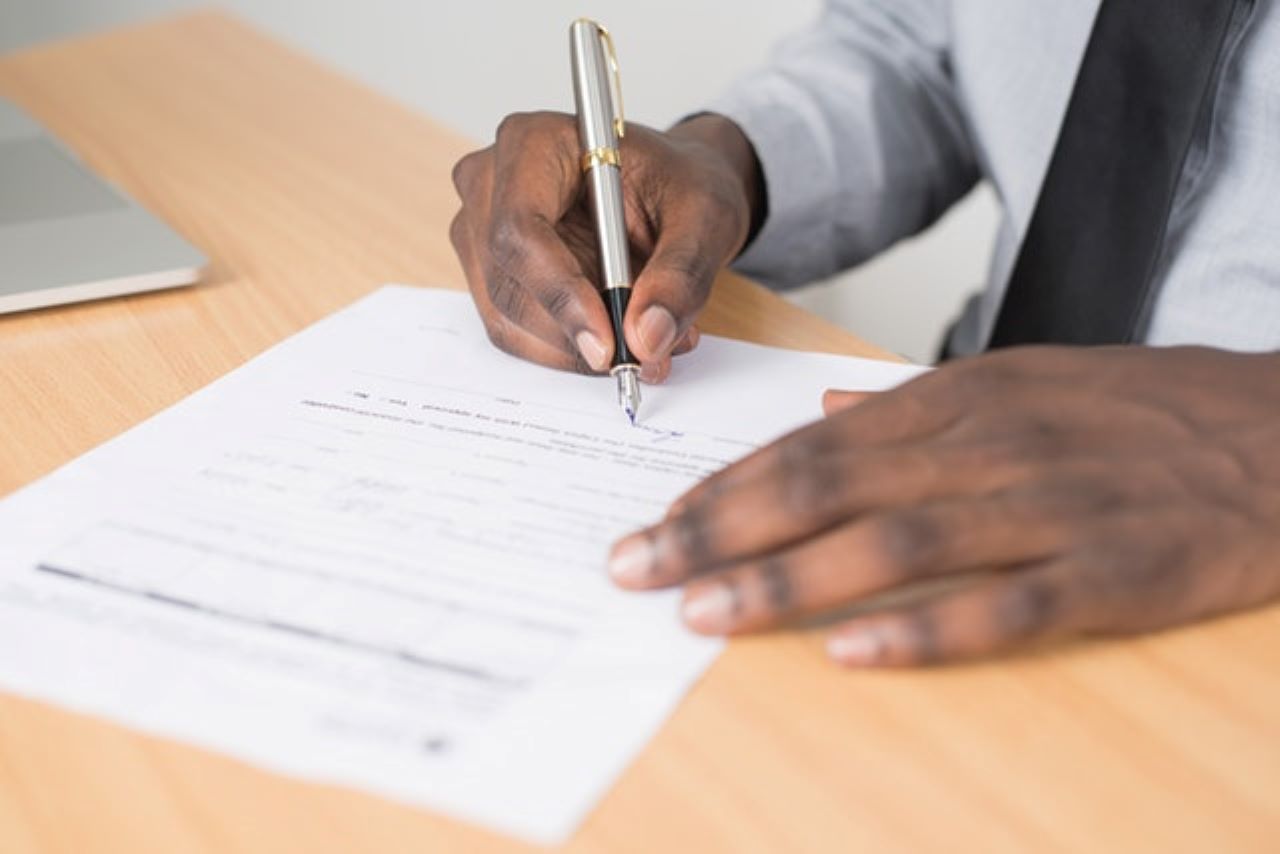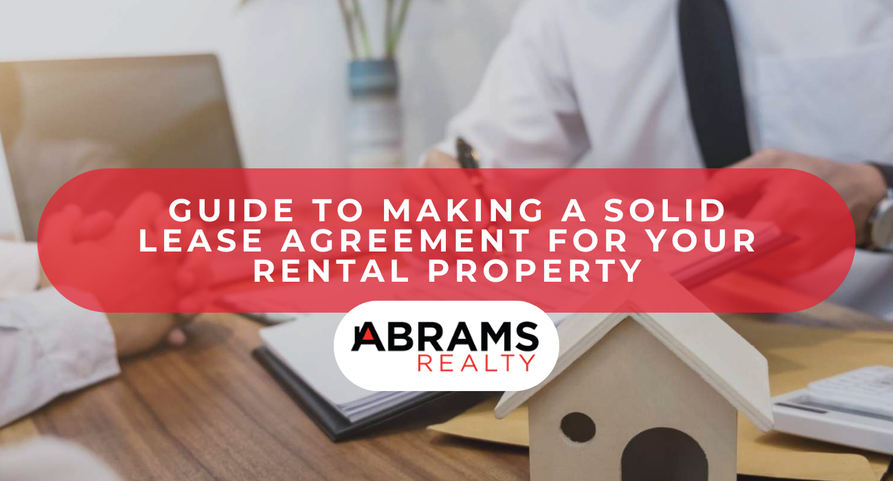Owning a rental property is a significant investment, and protecting that investment starts with having a strong lease agreement in place.
A lease is much more than a piece of paper; it is a legally binding document that defines the rules, expectations, and rights of both landlords and tenants.
Whether you’re renting out a single-family home, an apartment, or a commercial space, a well-crafted lease can save you from misunderstandings, legal disputes, and financial losses.
Abrams Realty has prepared this guide to help landlords create a lease agreement that sets clear expectations, protects their rights, and minimizes risks. Read on to learn more!
Why a Solid Lease Agreement Is Crucial
A lease agreement acts as a blueprint for the landlord-tenant relationship.
It clearly defines the terms under which a property is rented, ensuring both parties are on the same page about responsibilities, timelines, and expectations.
Without a well-drafted lease, landlords leave themselves vulnerable to misunderstandings or legal disputes that could have been easily avoided with better planning.
Additionally, rental laws vary widely between states, counties, and cities. A good lease reflects not only the specific needs of your property but also adheres to local regulations.
This ensures that your lease is enforceable and that you remain compliant with housing laws.
Components of a Strong Lease Agreement
1. Basic Information
Start by including all necessary identifying details. This section should contain:
Names of all tenants and the landlord.
The address of the rental property.
The lease start and end dates.
Whether the lease automatically renews or requires renewal action.

Be sure to clearly indicate if the lease is a fixed-term agreement or a month-to-month arrangement.
2. Rent Details
Clearly state the rental amount, the due date, and the acceptable payment methods. Provide additional details, such as:
Accepted payment methods (e.g., checks, online transfers).
Penalties for late payments (including grace periods).
Consequences of bounced payments or repeated late payments.
3. Security Deposits
State the amount of the security deposit and outline its purpose. Be specific about:
Conditions for refunding the deposit.
How deductions will be calculated for damages or unpaid rent.
When and how the deposit will be returned to tenants after they vacate.
It’s also important to follow state or local laws regarding deposit limits and timelines for refunds.
4. Occupancy and Use of Property
Clarify who is allowed to live in the rental unit. Include language about:
Whether subletting is permitted.
Maximum occupancy limits.
Rules regarding overnight guests and long-term visitors.
5. Maintenance and Repairs
This section should define the responsibilities of both parties when it comes to maintaining the property. For example:
The landlord’s duty to maintain structural integrity, plumbing, and major appliances.
Tenants are responsible for maintaining cleanliness, promptly notifying the landlord of any maintenance needs, and preventing any damage to the property.
Include language that prohibits unauthorized repairs or alterations by tenants without written consent.
6. Rules and Restrictions
Include clear rules about the use of the property, such as:
Whether pets are allowed (and any associated fees or deposits).
Prohibited activities, like smoking indoors or illegal activities.
Noise restrictions to prevent disturbances to neighbors.

7. Entry by Landlord
Explain the circumstances under which you, as the landlord, can enter the property. Most states require notice before entry unless it’s an emergency. Specify:
How much advance notice will be given.
Reasons for entry (e.g., repairs, inspections, showing the unit to prospective tenants).
8. Renewal and Termination
Detail how the lease will end or renew. Be clear about:
How much notice is required for tenants to vacate at the end of the lease.
The process for non-renewal by either party.
Situations that may result in early termination, such as breaches of the lease.
9. Legal Clauses and Disclosures
Your lease should include clauses that address:
Compliance with local rental laws.
Required disclosures (e.g., lead paint, mold risks).
Liability waivers for tenant-owned belongings.
Adding an arbitration or mediation clause can also help resolve disputes without resorting to expensive litigation.
Steps to Draft and Finalize the Lease Agreement
1. Research State and Local Laws
Before drafting your lease, familiarize yourself with rental laws in your area. For instance, some states limit the amount you can charge for late fees or restrict the kinds of questions you can ask tenants.
2. Use a Template
While lease templates are readily available online, they should be treated as a starting point.
Customize the template to reflect the unique aspects of your property and the specific needs of your rental arrangement.
3. Seek Legal Review
If possible, have an attorney or real estate professional review your draft to ensure compliance with state laws and minimize risks.

4. Communicate With Tenants
When presenting the lease to tenants, walk them through the key sections to ensure they understand their responsibilities. This transparency helps build a strong landlord-tenant relationship from the start.
5. Keep Records
Once the lease is signed, provide copies to the tenant and keep a digital and physical record for your files. This ensures you have a clear reference in case of future disputes.
Common Pitfalls to Avoid
Using Generic Templates: A one-size-fits-all lease may not comply with your local laws or suit your property’s needs.
Failing to Include Specifics: Vague language can lead to misunderstandings. Be as detailed as possible when describing terms and expectations.
Not Updating the Lease for Renewals: If renewing a lease, revisit and update outdated clauses to reflect changes in laws or property conditions.
Skipping Legal Review: Errors or omissions in a lease can leave you unprotected, so professional input is invaluable.
Bottom Line
A solid lease agreement is your first line of defense in managing your rental property effectively and safeguarding your investment.
By including essential details such as rent terms, tenant responsibilities, and legal clauses, you set the groundwork for a smooth and mutually respectful landlord-tenant relationship.
If drafting a lease feels overwhelming, Abrams Realty is here to help.
Our team has extensive experience in property management and real estate law, and we understand the challenges landlords face.
Call Abrams Realty today to discuss how we can help you manage your rental property and protect your investment with a comprehensive lease agreement.
Let’s make your property management experience as smooth and hassle-free as possible!


